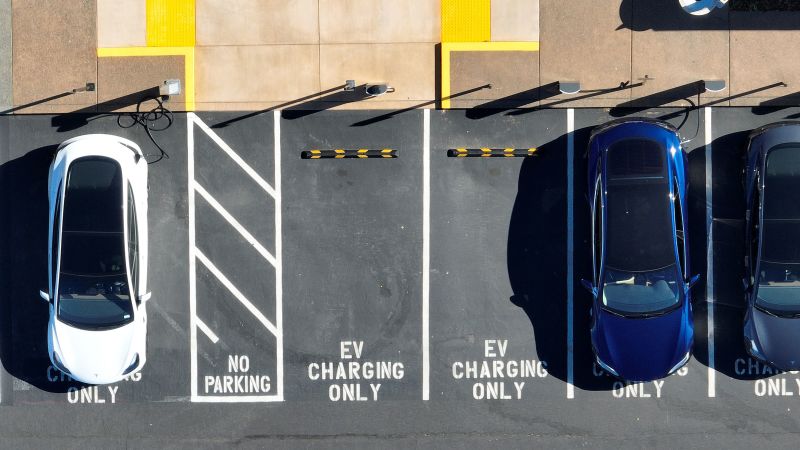Electric cars are supposed to be the future, but they still have issues that are keeping away many car buyers. The range is too short. The batteries are too heavy and expensive. They take too long to charge. But a number of companies say they have the technology to solve many — maybe even all — of these problems.
Toyota, in particular, has said it might be on the cusp of such a breakthrough. Other automakers are also working with various battery companies on versions of this new technology.
The would-be breakthrough is called a “solid state battery,” and the only problem is that — much like other vaunted Earth-changing technologies — for a few years now, it’s always been just a couple of years away.
Car companies including Stellantis, Hyundai and Volkswagen have also teamed up with firms working on solid state batteries. The technology holds the promise of batteries that are smaller and lighter while providing more power. They could be safer with less chance of catching fire in a crash, too.
But solid state technology has its own challenges, and it’s not the only way automakers could achieve lighter, cheaper and faster charging electric vehicles.
The main difference between a solid state battery and the lithium-ion batteries currently used in electric cars is a component known as the electrolyte. In a lithium-ion battery, the electrolyte is a gooey liquid. In a solid state battery, the electrolyte is, well, a solid. That solid electrolyte is one reason that solid state batteries might be safer than lithium-ion batteries. If a liquid electrolyte battery is broken or punctured, the two sides of the electrolyte can ooze together, which can lead to an uncontrolled energy flow, followed by a fire.
Generally speaking, solids are also denser than liquids meaning the electrolyte takes up less space and battery cells can be smaller. But some companies are working on other strategies, as well, that can make batteries still smaller and lighter and, also, faster charging.
The main challenge for all of these companies, and the automakers that have invested in them, is how to produce these hi-tech batteries economically in the sort of numbers needed to build affordable electric cars. Meanwhile, there are competing battery technologies for which manufacturing techniques are well established.
It’s a wide-open field right now with a number of start-up companies each working with different chemical combinations and even slightly different physical structures for their batteries. There’s still no clearly superior technology, said William Kephart, a battery researcher at the consulting firm P3 Group
Fast charging times, a key consumer demand, is one challenge for solid-state batteries. Generally, it takes the lithium ions in the batteries used currently more time to move through a rigid material than a liquid, Kephart said. That tends to make it take longer to receive energy, which slows charging times, and makes it slower to release energy — which drags on a vehicle’s acceleration.
Solid-state battery company Quantumscape claims that its solid-state batteries — which use some liquid, but not for the electrolyte — have been tested and can charge even faster than typical lithium ion batteries.
Solid-state batteries will tend to be more expensive because they contain more lithium, which is expensive, said Kephart. Lithium prices will come down as more sources are found and accessed, he said, but, compared to other batteries, solid-state batteries will tend to cost more.
A company called Factorial, which counts Stellantis and Mercedes as investors, claims its solid-state battery technology uses less lithium than traditional batteries, which could potentially reduce costs, especially as production ramps up.
“We think the costing actually will be competitive because lithium, just from the raw material perspective, it’s not a scarce material,” said Factorial chief executive Siyu Huang.
Quantumscape also say its battery design eliminates graphite, reducing expense and, the company claims, greatly reduces carbon emissions from manufacturing.
At the same time, though, some other battery companies are working to improve traditional liquid-electrolyte batteries, improvements that could make that existing technology better. Just changing the one piece of the battery by adding silicone could yield big improvements in performance at relatively low cost. That’s what’s proposed by a company called OneD Battery Sciences, in which GM has invested.
OneD’s technology allows production processes to stay roughly the same while promising big improvements in performance, according to the company. That means less trouble and expense for battery manufacturers and automakers.
Other companies are working on semi-solid state batteries that combine parts of each type of battery, providing some of the benefits of solid state without completely ditching the standard fluid-based design.
Ultimately, there probably will never be one battery technology used in all EVs, GM spokesperson Phil Lienert said. The type of batteries will be matched to the vehicle and the specific market where it’s sold. It’s similar to how automakers use different engines in various models and in different markets. GM’s Ultium electric vehicle design, which underlies all of GM’s EV models, was specifically engineered to enable the use of all different sorts of batteries.
“When you have a customer lineup as big and diverse as ours, you need to have multiple solutions that can coexist” within the same basic engineering, he said.
Read the full article here




